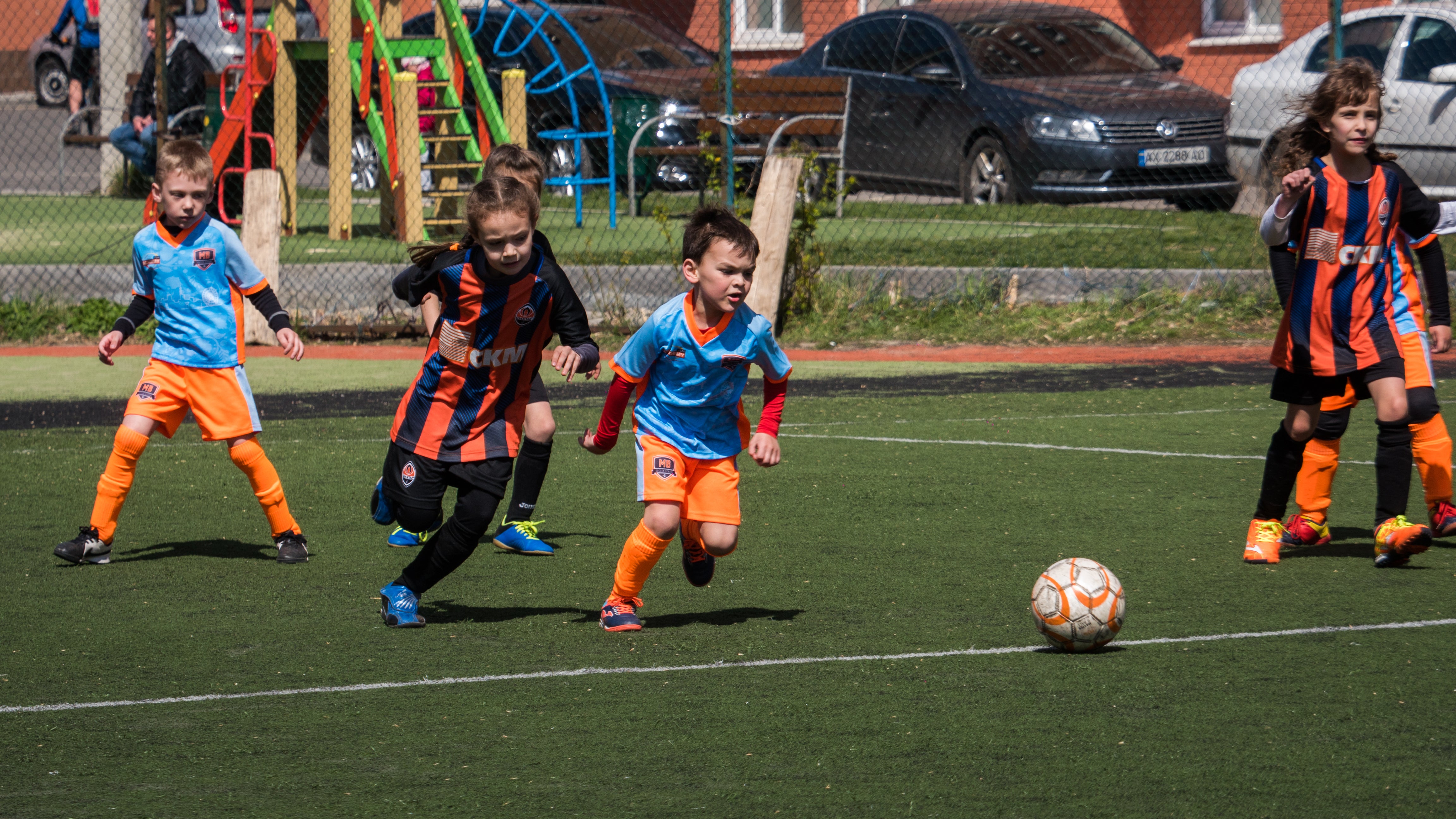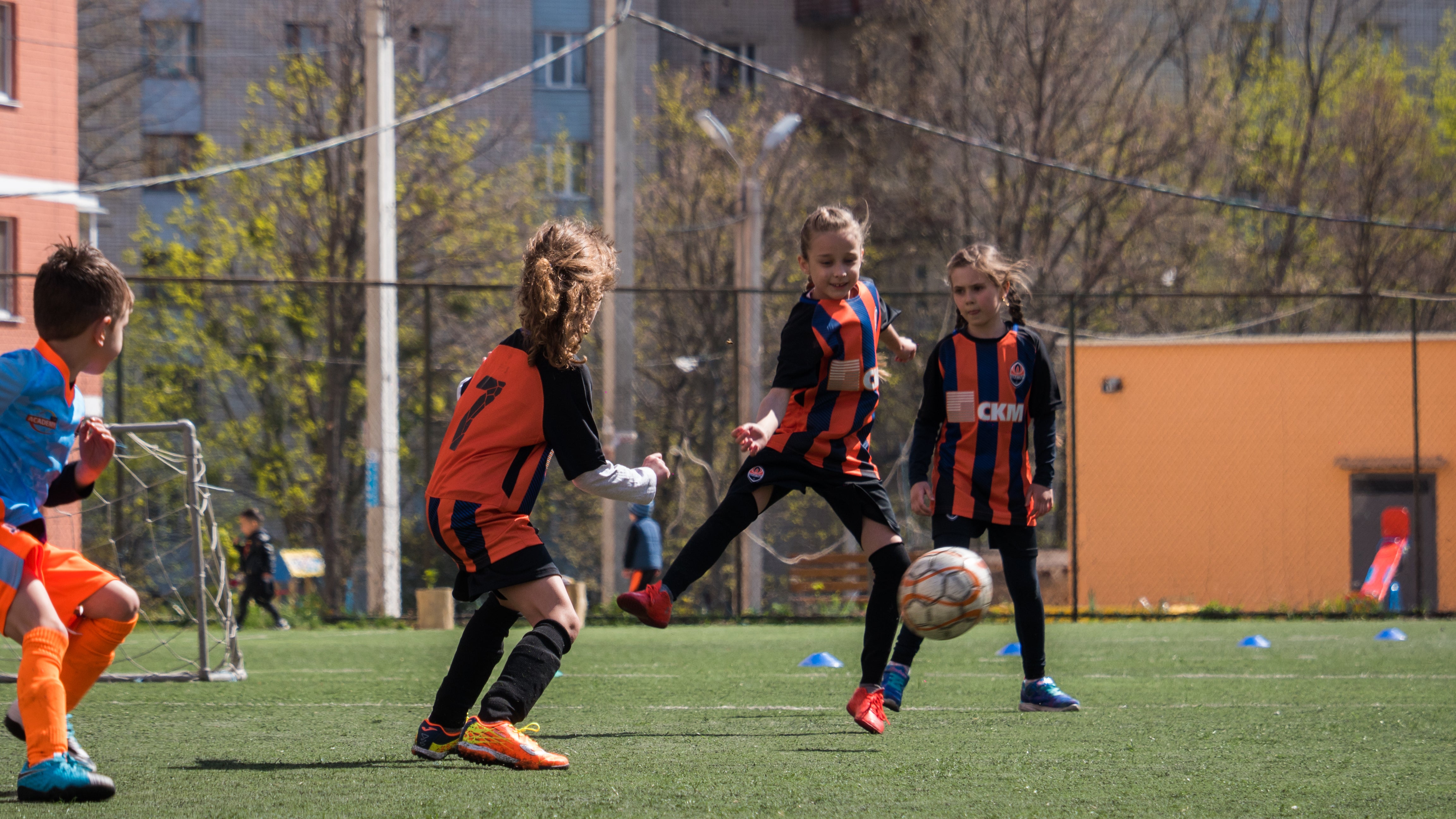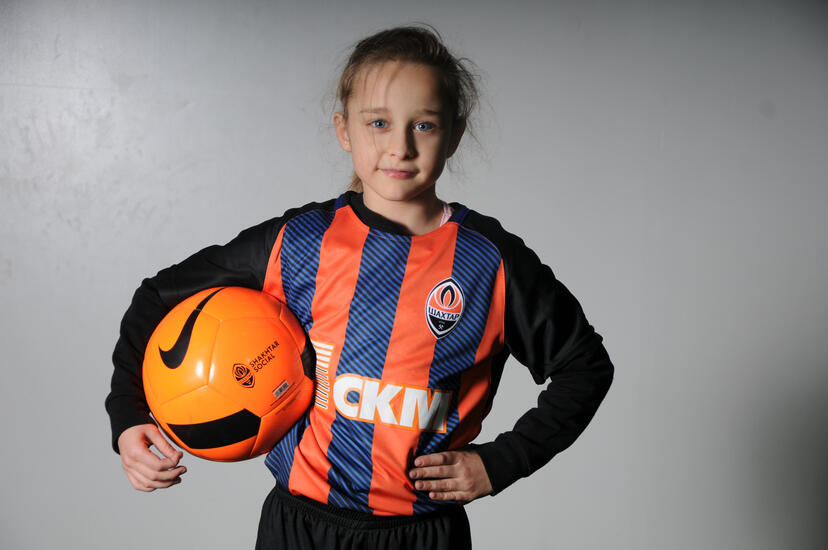“Football is for men only.” Have you ever heard such a statement? Social project “Come on, Let’s Play!”, implemented by FC “Shakhtar” and supported by United Nations Population Fund, proves the opposite. In this feature we discuss gender stereotypes in sports, arising of the little stars in the female football, and the difference between boys and girls in the game.
Not a girls’ business?
“Mom, I want to play football!” When a boy expresses such a wish, then parents, most probably, will put all efforts possible to fulfill it. But what if a girl says it? In this case reaction might be not that obvious. When parents choose what type of sport to engage their child in, they often rely on the unjustified “this is for boys, and this is for girls”. Moreover, sometimes, when a girl wants to kick a ball in the yard, she is advised to rather go for dancing or rhythmic gymnastics. Gender stereotypes are cultivated in families and conveyed further. As a result, sport loses a plenty of motivated girls who are ready to invest themselves in what they truly love.

According to the data from U-Report, 4 in 10 Ukrainians aged 14-34 agree that some types of sport are good for men only. The top 3 men’s sports, in their view, are combat sports, weightlifting and football. Regarding the latter, this belief is more common among women than men (28,5% vs 17,3%). Third of female respondents and quarter of male respondents think that men possess more qualities needed for playing football. But is it not a myth? “In fact, it is all about genes and physical development, not about sex. Sport, undoubtedly, advances speed, coordination and agility. But the results depend on each child individually,” ruins the myth Andriy Voronjko, trainer of the first female football team based in Kharkiv.
Girls in the game
“Come on, Let’s Play!” is a social project of FC “Shakhtar” supported by UNFPA. The project goal is to evolve mass kids` football in Ukraine. Thanks to this initiative, three thousand kids aged 7-12 train for free in 23 Ukrainian cities and towns. It is especially important to encourage girls to play. Therefore, the organizers place ads with little female football players at schools. “We were, perhaps, the first ones who told parents: don’t be afraid to sign up your girl to the football school. If the daughter likes this game, then why should not she play?” Oleksandr Ovcharenko, a manager of social projects at FC “Shakhtar”, tells. At the beginning of this project, there were only 2-3 girls who came to trainings. Now approximately 150 girls play football across the country. Moreover, girls are captains in the teams from Ivano-Frankivsk and Donetsk. There is a rule for internal tournaments: a goal, scored by a girl, is counted as two. So, boys are also interested to have girls in their teams, as it immediately doubles their chances for success.

One of the little stars of the project is Milena Ivanchenko. When the project “Come on, Let’s Play!” began in 2013, a 3-year-old Milena came to trainings with her brother and simply observed the game. Now a girl can catch a soccer ball on her foot 67 times, which is a rare case among boys. In the final tournament of “Come on, Let’s Play!” she was titled the best player among girls, whereas football scouts already foresee a big future for the girl.
In December 2018 a first female team was founded in the frame of the project. Also, it is the youngest female football team in Ukraine –girls are only 6-7 years old. By reaching adulthood they will have already been professional football players. It is the first female team that Andriy Voronjko trains. He states that it is easier to work with girls. “Boys often mess around. Girls, on the contrary, are disciplined. They are more organized, diligent and attentive.” He is assured that in the future they can participate in the Championship in Ukraine as well as in the European Football Championship, if trained even more. Little female football players already participated in the final tournament among one year older boys and showed great results there. When asked how boys react when they see a girls’ team coming out to the football pitch, Andriy Voronjko responds that in such age kids do not see the difference: “The most important for them is the game itself and they get a lot of joy from playing.”
“Engaging girls to sports contributes to better health, boosts their confidence and self-esteem. According to data, issued by the Ministry of Health in the UK, nearly 2,5% of all healthcare expenses are incurred as a result of a low or absent physical activity,” Nataliya Koshovska, UNFPA programme analyst, states. One of the leaders of the first female football team is Milana Kovtun. Before joining the team, the girl was a professional gymnast with a plenty of awards. She tried football thanks to her father. As an active fan, knowledgeable about all the teams possible, he saw an announcement about a girls’ team to be launched and brought his daughter to try it out. Eventually, Milana got so passionate about it, that she chose football over gymnastics and now does her best at each football training.
So, is football really not a girls’ business? Stories of little female football players of “Come on, Let’s Play!” show that boys and girls play equally good. The most important is motivation and desire to be in the game. When these two preconditions are there, then the only thing left is to support the child and encourage to keep on. The project “Come on, Let’s Play!” gives all possibilities for it.


